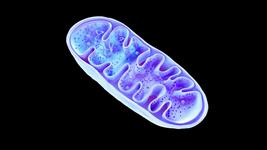Carbon
CARBON Newsletter (9 August) - Your Latest News About CRISPR in AgroBio
By: Gorm Palmgren - Aug. 9, 2022
CRISPR AgroBio News (CARBON) is a new initiative from CRISPR Medicine News. CARBON will bring you the latest news on how CRISPR can shape agriculture for the future to guarantee food security in times of population growth and climate change.
To get more CRISPR AgroBio News delivered to your inbox, sign up to the free weekly CARBON Newsletter here.
Top picks
- A new CRISPR-based approach to rice eating and cooking quality (ECQ) targets the crop's grain protein content (GPC). The Chinese authors report that CRISPR-Cas9-mediated knockout of genes encoding the grain storage protein glutelin produced lines with down-regulated GPC and improved ECQ.
- Chinese researchers have retrofitted a PE2 plant prime editing system from a regular CRISPR-Cas9 system. Using two genomic sites of rice Waxy gene Os06g04200 as a target, the researchers achieved up to 67% gene editing in Cas9-positive events. A similar PE3 system reached an efficiency of up to 39%. In addition, the authors find that pegRNA secondary structure variations were responsible for inconsistent editing for the same or across different target sites.
Technical advances
- Czech researchers have developed a hairy root transformation system as a tool for CRISPR-Cas9-directed genome editing in oilseed rape (Brassica napus). The authors examined the mutation efficiency of CRISPR for tryptophan aminotransferase (BnaTAA1) genes involved in the auxin biosynthesis pathway. They showed that pcoCas9 is more efficient in mutating the targeted loci than SaCas9 and that the presence of the NLS signal enhanced the chance of mutagenesis by 25%.
- Prime editing and somatic cell nuclear transfer (SCNT) has been used to correct a pathogenic mutation in dogs and to produce two cloned puppies carrying the fixed mutation. Researchers from South Korea used the gene-editing method in fibroblasts from a purebred Labrador retriever to correct a T to C point mutation in the BICF2S23030416 locus believed to cause canine hip dysplasia (HD). This disease excludes dogs from breeding programs. The corrected mutation was confirmed in both puppies, while no off-target mutations were identified.
- A new user-friendly web-based tool to design guide RNAs for base editing in plants promises to simplify complications associated with the design of base editing technology. The program, called BEtarget, can be accessed freely and is supported by 46 plant reference genomes. It helps design gRNAs with different protospacer adjacent motifs (PAM). Moreover, it integrates various functions, including automatic identification of open reading frames, prediction of potential off-target sites, annotation of codon change, and assessment of gRNA quality.
Disease control
- A paper under review describes a CRISPR-Cas9 system containing a single-guide RNA (sgRNA) to enable targeted mutagenesis of both the NtMLO1 and NtMLO2 loci simultaneously and enhance the powdery mildew resistance of tobacco. The approach generated different mutants, of which two-thirds had both genes mutated, and only the double mutants showed enhanced resistance to powdery mildew compared to wild-type plants.
Agronomic traits
- American scientists describe a new approach to using CRISPR to improve biological nitrogen fixation (BNF) and yield in rice. The authors used gene editing to target the breakdown of apigenin, a flavone that induces BNF. Gene-edited rice showed increased apigenin root exudation and biofilm formation. This favoured the enrichment of diazotrophic bacteria recruitment. In addition, modified rice plants displayed increased grain yield when grown at limiting soil nitrogen conditions.
Regulation and opinion
- A piece in Jones Day on JDSupra.com provides a patent and regulatory update for CRISPR technology in the agricultural industry. The article discusses how research in CRISPR-edited agriculture is ramping up, even as patent ownership of the CRISPR technology remains in dispute. At the same time, countries grapple with how to regulate the use of CRISPR in agriculture appropriately.
Reviews
- A review in Plant Communications discusses CRISPR solutions to control crop drought and salinity stress. First, it updates plant responses to these abiotic stresses at the morphological, physiological, and molecular levels. Next, it highlights recent advances in CRISPR-based tools and their use to understand the multi-level nature of plant adaptations to drought and salinity stress. Finally, the authors suggest how the integration of CRISPR tools with modern breeding approaches can be used to engineer resistance.
- Another review by scientists in South Africa discusses CRISPR-Cas-based tools for the targeted control of plant viruses. The study outlines strategies for delivering CRISPR-Cas reagents to plant cells and provides an overview of recent advances in engineered CRISPR-based resistance against DNA and RNA viruses in plants. Finally, the authors provide insight into the limitations and challenges that CRISPR-Cas technology currently faces.
- "Genome Editing Technologies for Crop Improvement" is the title of a new book, edited by Kaijun Zhao, Rukmini Mishra, and Raj Kumar Joshi and published by Springer. In 19 chapters, the book discusses general information on the recently emerged new biotechnology of genome editing, practical methods for constructing primary vectors for plant genome editing, and the current application of genome editing tools in the genetic improvement of different crops.
Courses
- Researchers from Argentina have designed a laboratory activity to teach post-graduate students how to use CRISPR-Cas9 to obtain and analyse phytoene dehydrogenase (PDS3) mutants in Arabidopsis thaliana plants. The course includes 1) design of guide RNAs, 2) plant transformation, 3) PDS3 albino phenotype evaluation, and 4) gene editing confirmation by PCR and single-stranded DNA conformation polymorphisms (SSCP).
Tags
CLINICAL TRIALS
IND Enabling
Phase I
Phase II
Phase III
Recurrent or Progressive High-grade Glioma, (NCT06737146)
Sponsors:
Suzhou Maximum Bio-tech Co., Ltd.
Sponsors:
Suzhou Maximum Bio-tech Co., Ltd.
IND Enabling
Phase I
Phase II
Phase III
Advanced Peritoneal Malignancies or Abdominal Metastatic Solid Tumors, (NCT06912152)
Sponsors:
Zhejiang University
Sponsors:
Zhejiang University
IND Enabling
Phase I
Phase II
Phase III







